Genney is the only swedish genealogy program that supports dna and haplogroups!
In Genney, it is possible to connect Y-DNA and mtDNA to individuals and their relatives. Genney also has a conflict system that makes it manageable.
Y-DNA and mtDNA are, and will be, a powerful tool for verifying paper research and for mapping relatives. It also provides a depth of origin for different parts of your genealogy.
Y-DNA (y chromosome DNA) is inherited unchanged from father to son with mutations that occur about every 150 years.
MtDNA (Mitochondrial DNA) is inherited from the mother to both sons and daughters but can only propagate to the daughters' children. MtDNA also mutates but much more rarely.
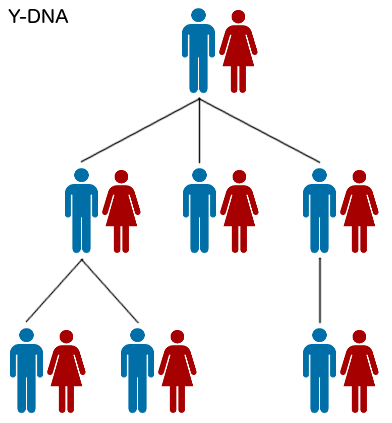
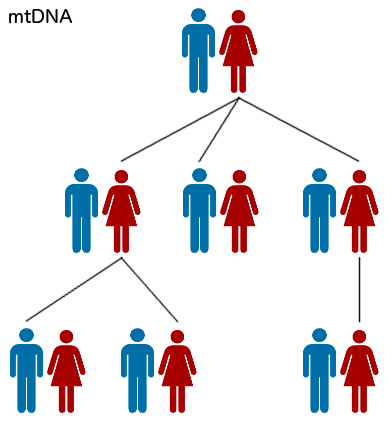
Both Y-DNA and mtDNA have a term for its particular mutation called haplogroup.
AtDNA (autosomal DNA), which is the most important type of DNA for genealogists, is inherited from both parents and can be seen as a "soup" of shared DNA from the ancestors. Which parts of the DNA are passed on to children happens randomly. Autosomal DNA can be used to support paper research and to find unknown relationships.
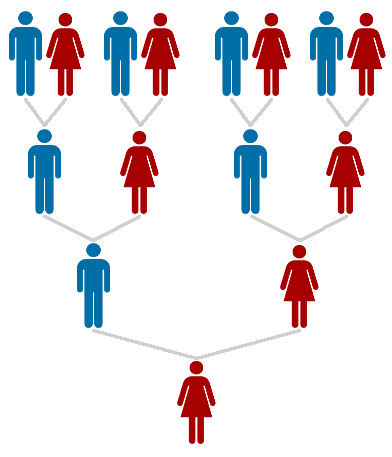
A major advantage of using DNA along with regular genealogy is that it can verify if the paper research is correct. One can try to find living descendants of a certain person and compare the descendants' DNA, thus drawing the conclusion of those who are really descendants.
Manage DNA and haplogroups
To add a haplogroup to a person in Genney, click next to the person's Y or mtDNA label. DNA samples window opens where you can select samples for Y-DNA or mtDNA.

You select the DNA sample you want to use, and select ok. The haplogroup inheritance window with persons who are possible ancestors and descendants of the haplogroup according to the inheritance order is displayed and you can choose which ones to be associated with the haplogroup.
If you delete a DNA sample, all connections between the DNA sample and the persons that it was associated with will disappear.

Persons who inherit the haplogroup and who have no conflict have a green icon, persons who already have a haplogroup and are in conflict have a yellow warning triangle and persons not affected because there is a locked person in the tree between have a red icon.
It is possible to lock a person to a haplogroup/DNA sample, which means that you can not overwrite the person and persons who are above or below the inheritance order. You lock the persons you are sure have the right haplogroup. By default, the person that the haplogroup is linked to is locked. Persons who are locked receive a lock icon in front of them.


Presentation
Persons associated with haplogroups get a dot in the personal boxes, a green dot for Y-DNA and a purple dot for mtDNA. You can also view the haplogroup as text in the person boxes. Both variants can be selected under preferences > Appearance.
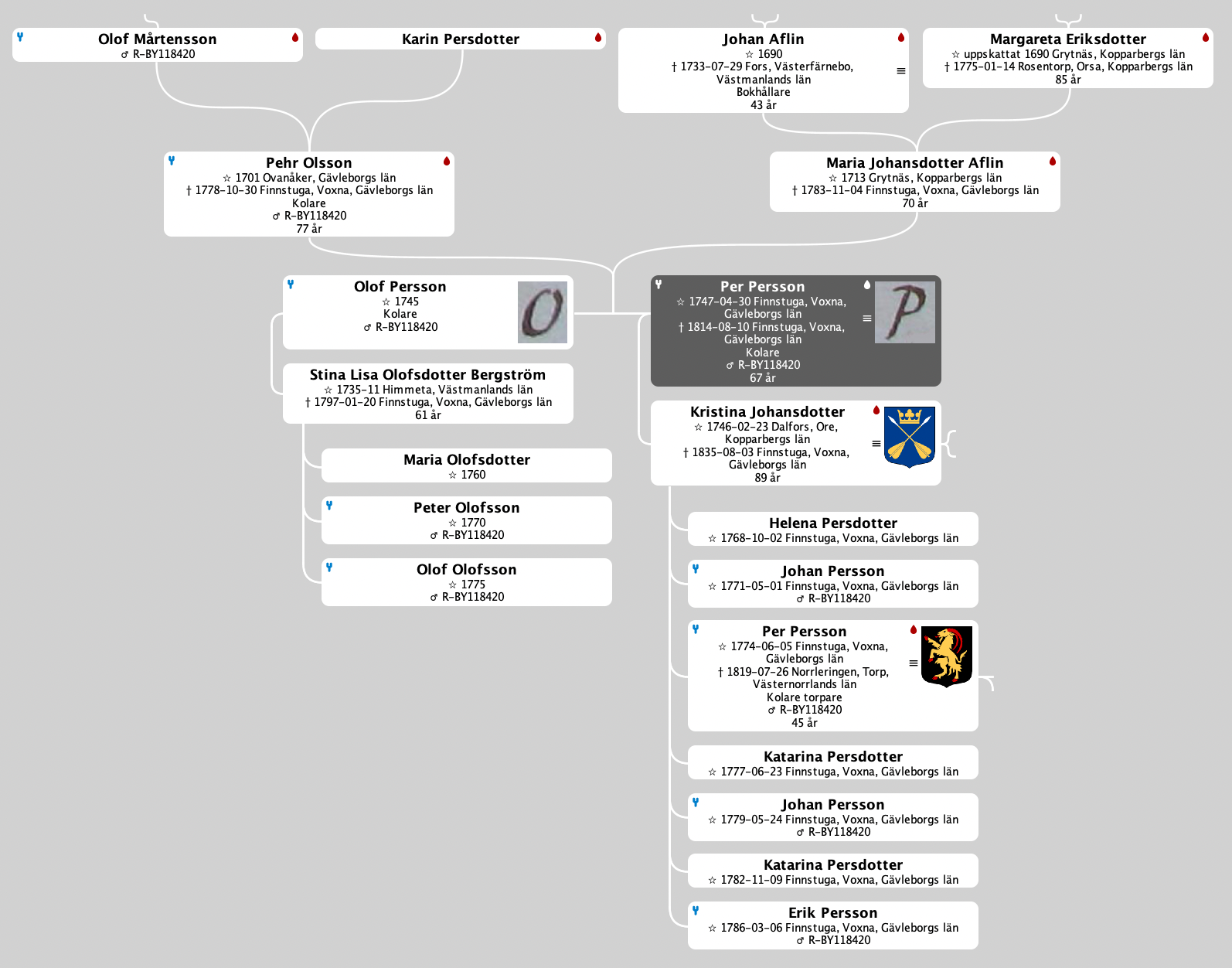
The map contains a feature that makes it possible to see where different haplogroup persons are born, which gives a picture of the haplogroup's movement in time.
It is also possible to show x-chromosome inheritence, which in FamilyTreeDNA is called x-match, which is not so easy to overlook otherwise especially pedigree collapse creeps in among the ancestors.
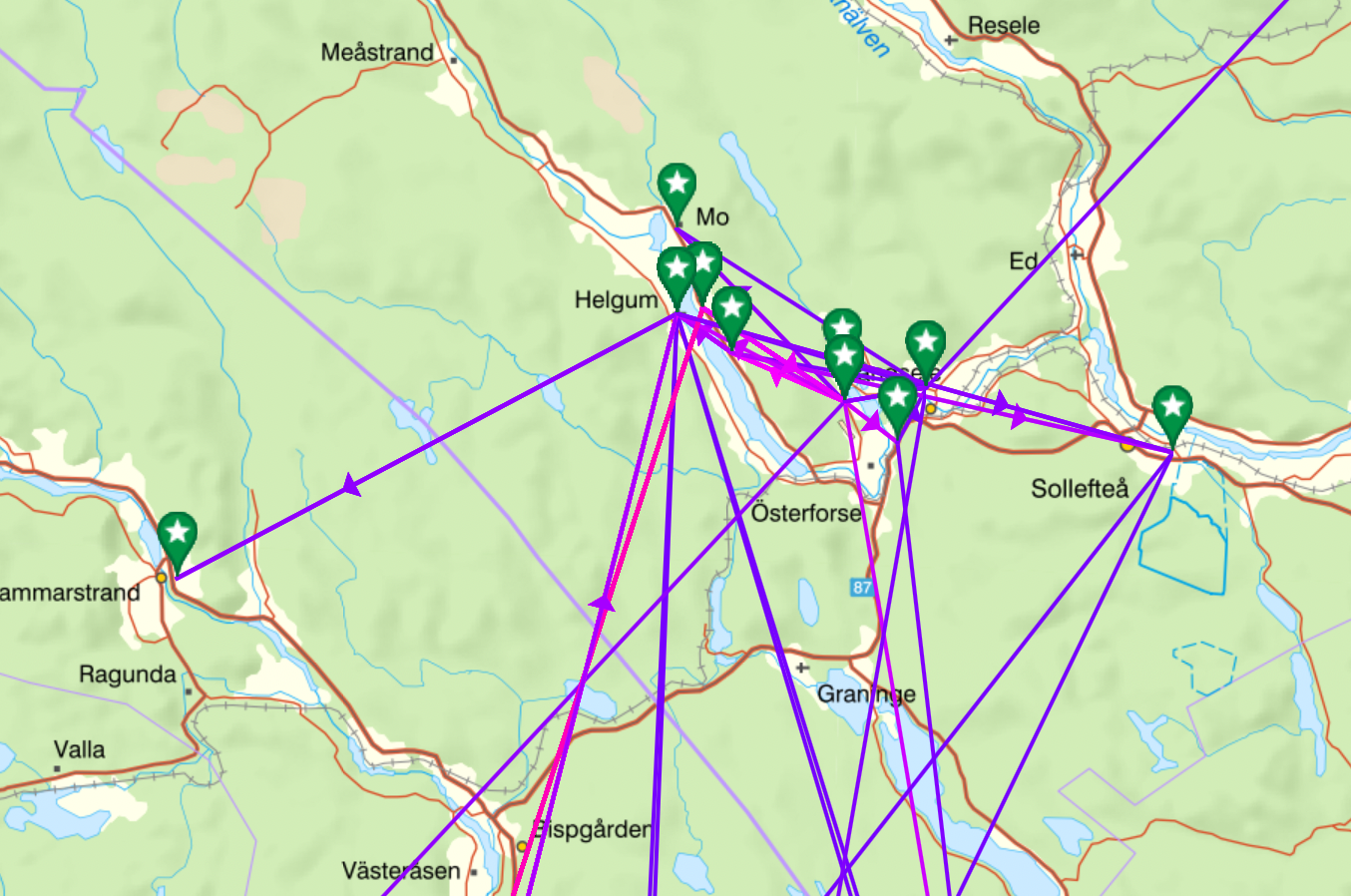
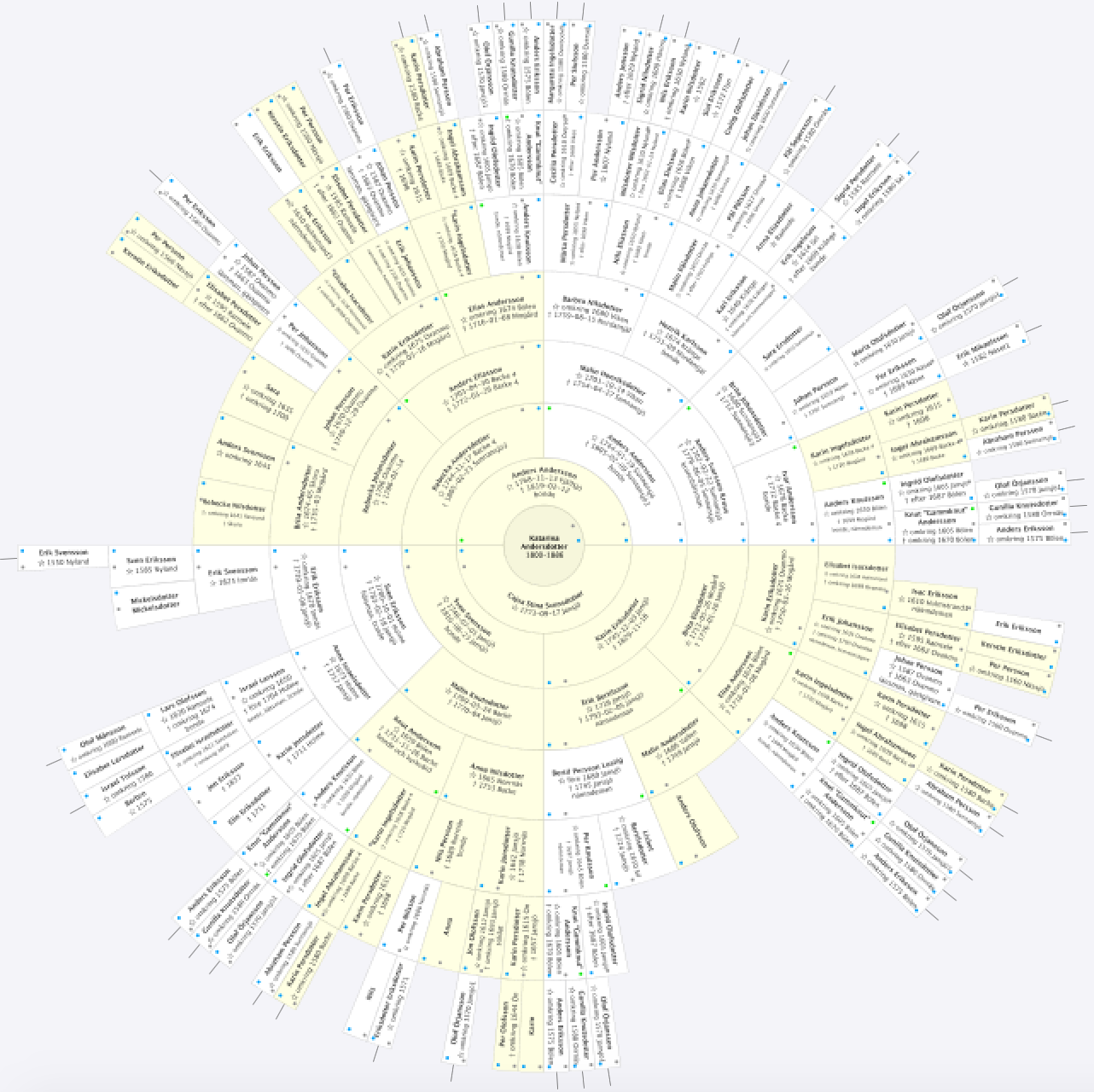
Printing
Haplogroups for a person can be included in the listed reports and in the web publishing. Furthermore, it is possible to print the map and the views can be saved as PDFs that can be printed.
It is also possible for different reports to choose whether descendants should use a patriline (y-dna) or matrilinear (mt-dna) inheritance scheme, which shows the spread of a haplogroup, if it does not contain conflicts.

